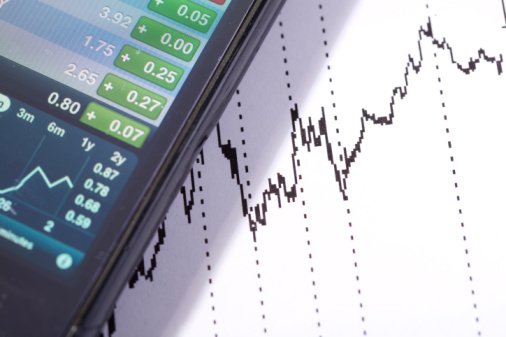by Hubert Marleau, Market Economist, Palos Management
June 20, 2020
What Happen In the Week Ended June 19, 2020
The stock market has turned into a rough battlefield this week. Friday was a “quadruple witching day” which refers to the simultaneous expiration of market index futures, stock futures, market index options and stock options. For example, $1.8 trillion of S&P 500 options expired on Friday. Such days bring high volatility, trading volume, speculative arbitrage and in turn uncertain sessions.
The market took the event pretty well. However, the bulls no longer hold the high ground. Investors may wait for the next shoe to drop. Is it going to be an overtly negative development on the pandemic front or something categorically positive on the economic front? No one knows. It’s explainable by the persistently high level of the CBOE Volatility Index. In mid-March it was around 80.0. On Friday, it was 35, about 15 points higher than its lifetime average. It confirms that uncertainties are going to be with us until a reasonable control of the disease is assured.
On the other hand, the reopening of economies has responded better than expected to the government application of fiscal and monetary stimulus. Greenshoots are blossoming in the housing sectors, labour market, international trade and population movements. Mortgage applications are at an all-time high. The baltic index, a reliable indicator of international trade, quadrupled in the last 30 days.
The number of Americans applying for first-time unemployment benefits edged lower again last week as employers are calling back workers and putting up hiring signs. The magnitude of positive economic surprises versus street expectations have been spectacular, suggesting that corporate earnings may be much better than current estimates.
Citi’s U.S. Economic Surprise Index, calculated daily to reflect data prints relative to expectations, is 75, the highest since the beginning of 2008 and up from minus 140 at the start of May. The Conference Board’s Leading Economic Indicator gained 2.8% in May.
It has become quite clear that we are in a two speed economy. Recent economic prints show that industrial production is lagging the robust recovery in retail sales. While the gap suggests that inventory drawdowns are taking place and it should bring increases in factory orders.
The Philadelphia Fed’s gauge of business conditions was a blowout in May rising from -43.1 in April to 27.5 noting optimism over future orders, employment and shipments. The NY Fed index for the empire state also rose above consensus expectation.
Yet, comments from government officials and central banks have indicated that the cycle of monetary and fiscal largeness ain’t over yet. The monetary authorities across the board are not convinced that supply chains are in good enough shape to bring factory output to where it was last January.
Thus, the central banks are pushing their respective governments to fiscally stimulate the animal spirit of businesses more than they did in the initial relief phase. They have manifested their willingness to help in this new process. The Federal Reserve Board is buying corporate bonds, the Bank of England expanded its bond-buying program by 100 billion pounds, the ECB conducted a huge 1.3 trillion euro liquidity operation with European banks and the People’s Bank of China supplied Chinese banks with 200 billion Yuan in fresh liquidity.
On the one hand, the coronavirus has reared its ugly head in numerous areas. Cases have spiked and the death toll is back on the rise in Texas, Southern California, Florida, Arizona, the Carolinas, Brazil, China, South Korea, etc. These new coronavirus outbreaks carry a message that the pandemic ain’t over yet.
Although Beijing said the outbreak has been contained and Apple shut only 11 stores, the incidents are exacerbating the existing fear that a second wave is very possible. Unfortunately, the virus does not respond to the wishes of central banks and it can only be stopped from spreading with a vaccine, herd immunity or preventive methods.
In the week ended June 19, the S&P 500 decreased 1.9% to close at 3098. Technically, the market should consolidate in a narrower trading range and skew to more downside risk than previously forecast. With stocks conspicuously priced for perfection, the collective behaviour of speculators is surely fragile. The last thing they want is for the coronavirus to threaten the upward path of economic recovery needed to justify equity valuations.
In this connection, I’ve adjusted my short term take on the broad market to 2900 to 3200, acknowledging that all stocks, including the techs which have fortress balance sheets and sheltered and defensible business models, are a risky fare. Nevertheless, I maintain that pullbacks should be bought. It is based on the assumption equity positioning remains relatively low with Hedge Funds, CTAs and Volatility Trading accounts.
While any dramatically negative outcomes on the virus front will unnerve investors, stocks will likely prove resilient as long as fatalities stay low and hospitalizations don't get out of hand. According to Jeremy Siegel of the Wharton School of Business, at a 20 P/E ratio, if S&P 500 earnings for 2020 were wiped out and if 2021 revenues and earnings look like 2019, then the market should have fallen only 5 or 6% last March.
In other words, we had back then an emotional overreaction of fear. In this respect, the fair value for the S&P 500 is around 3200.
The U.S. Dollar Is Counter-Cyclical and So Is Inflation
Investors should take note that the DXY has been considerably weakened since mid-march from
102.98 to 97.45 on Friday. As we expected, four major central banks (the European Central Bank, the Bank of England, the bank of Japan and the Swiss National bank) decided to scale down their dollar funding operations via the Fed’s swap lines because of shrinking demand for dollars. Mexico and South Korea are expected to do the same next week.
A few weeks ago, I stressed that dependency on foreign capital to equilibrate the economy is growing. The development of a huge twin deficit (Budget and Trade), at a time when corporate profits are falling and personal savings, while presently large, are likely to be spent as the economy reopens, spells trouble for the dollar. Given that the Fed is not ready at this time to raise interest rates and did confirm that it is prepared to take the risk of rising inflation, the exchange value of the dollar will probably be under downward pressure in order to attract foreign money. As a rule, currencies do not perform well when monetary policy is easy when it ought to be tight.
Moreover, the performance of the dollar is usually counter-cyclical. History shows that the greenback tends to fall when global economic growth rates and inflation expectations start to trend up. At the moment, the world is in a deflationary mode with little chance of an immediate surge in the inflation rate. John Authers, my favorite columnist, wrote in Friday’s Bloomberg Opinion that investors should take advantage of the cheap inflation hedges that the ten-year tips currently offer. He wrote: “With the Fed likely to hold rates low, the logical way to ease the pressure in the system, as all the liquidity finds a home, will be through rising prices.”
As a matter of fact, a sharp increase in inflation expectation has occurred since mid-March. US five-year tips yield suggests that inflation expectation has doubled from 0.55% to 1.10%. A NYFed inflation index shows that inflation expectations have not only picked up noticeably but are widely dispersed. It makes sense. On the monetary side, the money supply is surging fast everywhere around the world. On the physical side, supply disruptions are causing longer delivery times. On the financial side, the bond-buying programs of the central banks will lead to malinvestment and survival of inefficient zombies.
It should be properly noted that although the cyclical conditions for a lower dollar is an aftermath of Covid-19, a cyclical downleg will not take away its world dominance. What is important is that further declines in its exchange value, albeit cyclical and not structural, should encourage the novel rally in inflation sensitive assets to continue. A return to target prices would relieve many of these kinds of industries from today's deflationary pressures.
Barron’s Lisa Beilfuss wrote that Jim Paulsen of Leuthold Group said: “Paulsen went back over the past three decades to find that the current price/earnings multiple for the S&P 500 (using a blended P/E based on an average of the past 12 months’s earnings and forecast future 12 months’ earnings) isn’t all that much higher than where it was at the start of each of the last three economic recoveries in 1992-93, 2002, and late 2009 into early 2010.”
Despite P/E ratios being very high in each of those occurrences, they turned out to be excellent buying opportunities. It is true that the P/E ratio of cyclical stocks looks rich during recessions when earnings are down a lot. Paulsen rightly points out that few make money waiting to buy cyclical stocks at a low P/E. Sundial Capital Research’s Troy Bombardia argued in a note that when leading economic indicators rise month-over-month but remain lower than year-over-year, it has been historically good for the stock market.
John Authers ends his Friday missive with the following quote: “when hedging is this cheap, and when a return of inflation could cause many plans to go awry, it seems silly not to take the market up on its offer.” Buy Dips and Tips. Tips are Treasury Inflation Protected Securities.
Copyright © Palos Management















